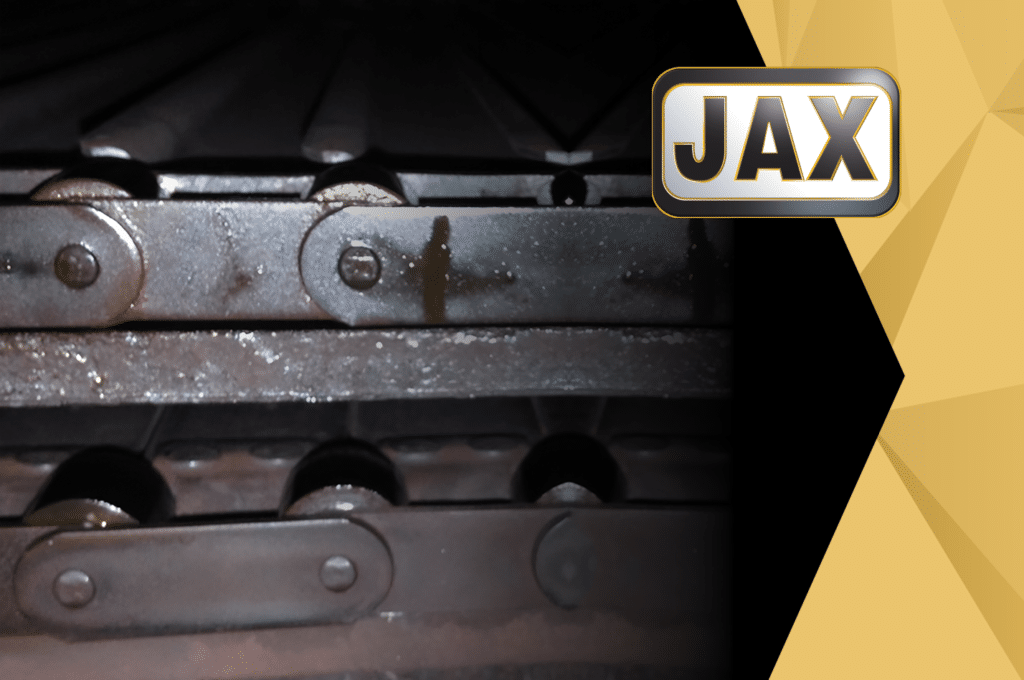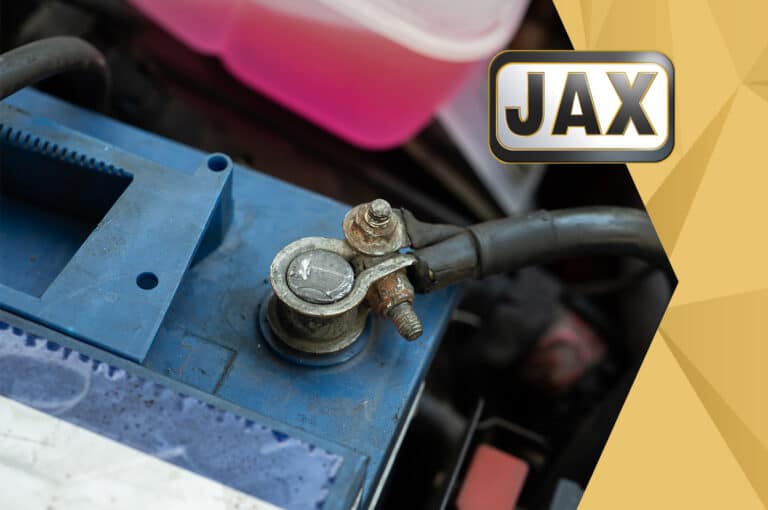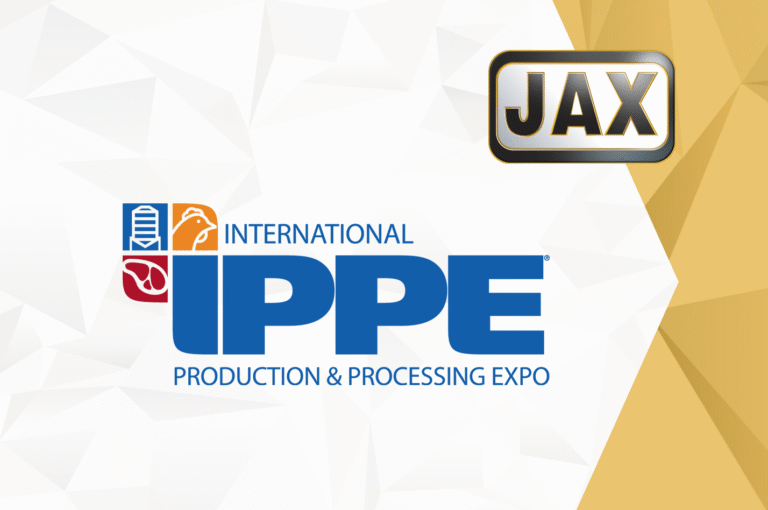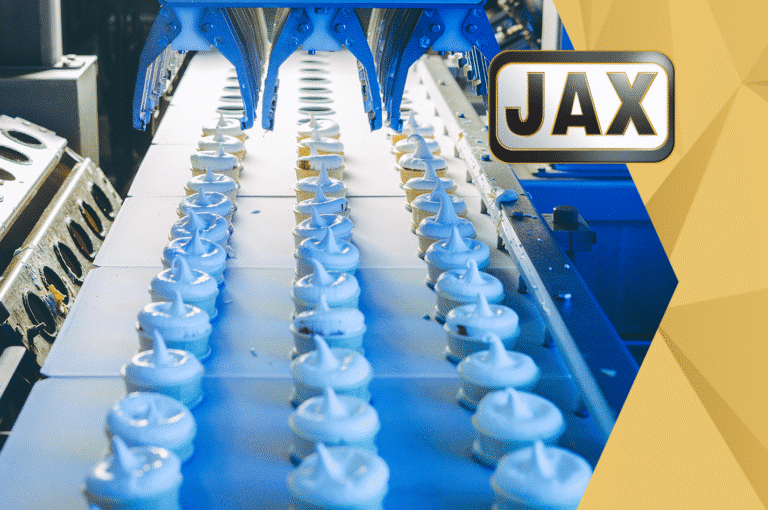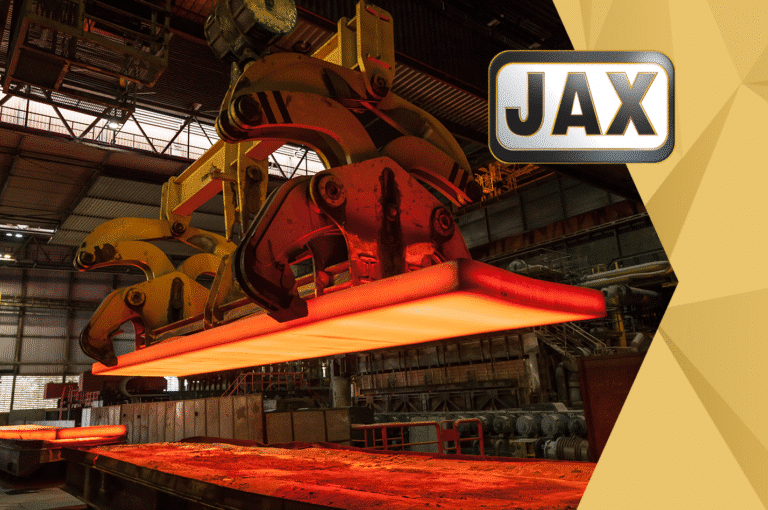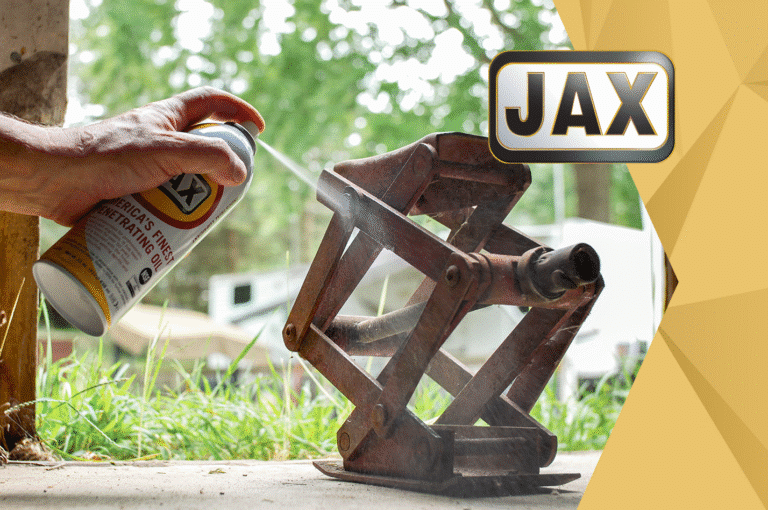Originally published in Plant Engineering’s May/June 2024 issue.
By: Eric J. Peter, Director and former President of JAX INC.
Learning Objectives
- Understand the challenges associated with lubricating chains and conveyors in extreme conditions such as high temperatures exceeding 300 °F or low temperatures below -40 °F.
- Identify suitable lubricant formulations and application methods tailored to specific environmental factors, including temperature variations, chemical exposures, and operational demands.
- Explore the role of specialty lubricants in enhancing equipment reliability, mitigating wear and corrosion, and optimizing production efficiency in industrial settings.
It may be the oldest method in history for transfer of power. Rope, in essence cable or chain made with natural fibers twisted and woven together into a continuous strand, is one of our earliest tools.
Today, in industrial applications, ropes and chains are typically made of metal and the lubricants for chains and cables are often grouped together, as their power transfer or conveyance functions are typically similar.
As we move into extreme service realms, wire rope is found in fewer places than chain because in addition to plates and pins modern chain is designed to reduce friction and wear with engineered bushings and rollers. Advances in metallurgy and manufacturing techniques have resulted in modern chains being ubiquitous in today’s industrial equipment. Wire rope may carry very high loads, but in extreme applications where speed, flexibility and friction reduction are required chain carries the day.
What is considered an extreme condition for chain or conveyor operation? Under ambient atmospheres and temperatures properly specified and formulated lubricants and lubricant carriers, which may be mineral oil or solvent based, can do an excellent job. The extreme realm occurs when temperatures of the chain or conveyor range above 300F(150C) or below -40F(-40C), or when exposure to chemical or corrosive environments can cause failures in manners different than normal wear and tear. Additional scenarios are considered extreme because the lubricant itself, if not specifically formulated, can harm the actual process in which the chain or conveyor is operating. All of these extreme scenarios call for products which fall under the specialty lubricants umbrella. We have entered an area where typical mineral base oils and additives will cease to function adequately.
In this extreme domain hand lubrication is now mostly impossible because of the environments and conditions undergone by these chains and conveyors. Fully automated lubrication systems are routinely utilized because lubricant dissipation and degradation can be rapid. For safety reasons, automated lube systems can also provide precise and timely application of the lubricant on equipment which is humanly inaccessible or dangerous while in production.
Extremely high temperature chain and conveyor applications
When operating temperatures of chains exceed 300F(150C) new considerations must be made to protect from wear and failure and to mitigate issues with thermal degradation of the lubricants. This high temperature realm could be further subdivided into increasing increments of approximately 100F(55C) intervals each step making even more rigorous demands upon lubricant formulations.
The first order is to determine exposure to the high temperature environment. For example, if the chain or conveyor is intermittently at high temperature, it may never get as hot as the actual process before returning to ambient conditions. This is important in terms of the price of the lubricant necessary to do an adequate job. Above 300F(150C) we are likely in conditions requiring synthetic or solid film lubricants. Under extreme temperatures suitable chemistries of the lubricant, carrier and possibly solids will grow much more expensive as temperatures rise to 400F(205C), 500F(260C), 600F(315C) and possibly above.
Plant engineers should be diligent in measuring temperatures of the lubricated chain all along the process to determine the highest temperature encountered and the amount of time in the cycle it will be at its highest. Often the chain will not achieve the level of the high temperature process point. Also of importance is ensuring the lube reservoirs are at ambient or near ambient temperatures. This will protect the lubricant from thermal degradation before it is ever applied. All this data will be a necessary guide to optimal lubricant selection and is instrumental in determining the best lubrication method and lube intervals.
We have now established the requirement for a high temperature chain lubricant. At these temperatures most surface-active chemical additives will start losing effectiveness. More of the lubrication responsibility will be on the base fluid chemistry and possibly any solid film additives or components. PAO (polyalphaolefin) based synthetic lubricants have found broad acceptance in transportation applications due to their high and low temperature abilities, but above 300F(150C) it will no longer be the synthetic base fluid of choice.
One of the major culprits hindering proper high temperature chain lubrication is residue created from thermally degraded lubricating fluid under the oxidative stress of the hot environment. Not only will PAOs start to degrade as temperatures rise, but the hard carbonaceous residue left behind will block lubricant passageways and can itself cause wear. Also, due to PAO’s non-polar nature it lacks the self-solubilizing attribute of some of the more polar molecules found in base fluids for higher temperature applications.
As temperatures rise above 400F(205C) we will find greater use of synthetic fluids with more polar molecules such as PAGs (polyalkylene glycols), and POEs (polyol esters). These fluids provide cleaner performance and withstand higher temperatures for longer periods before thermally degrading. PAGs leave little or no residue but can generate some undesirable smoke as temperatures rise near 500F(260C). Other synthetic fluids may have niche applications but can show weaknesses in either wear protection or deposit control.
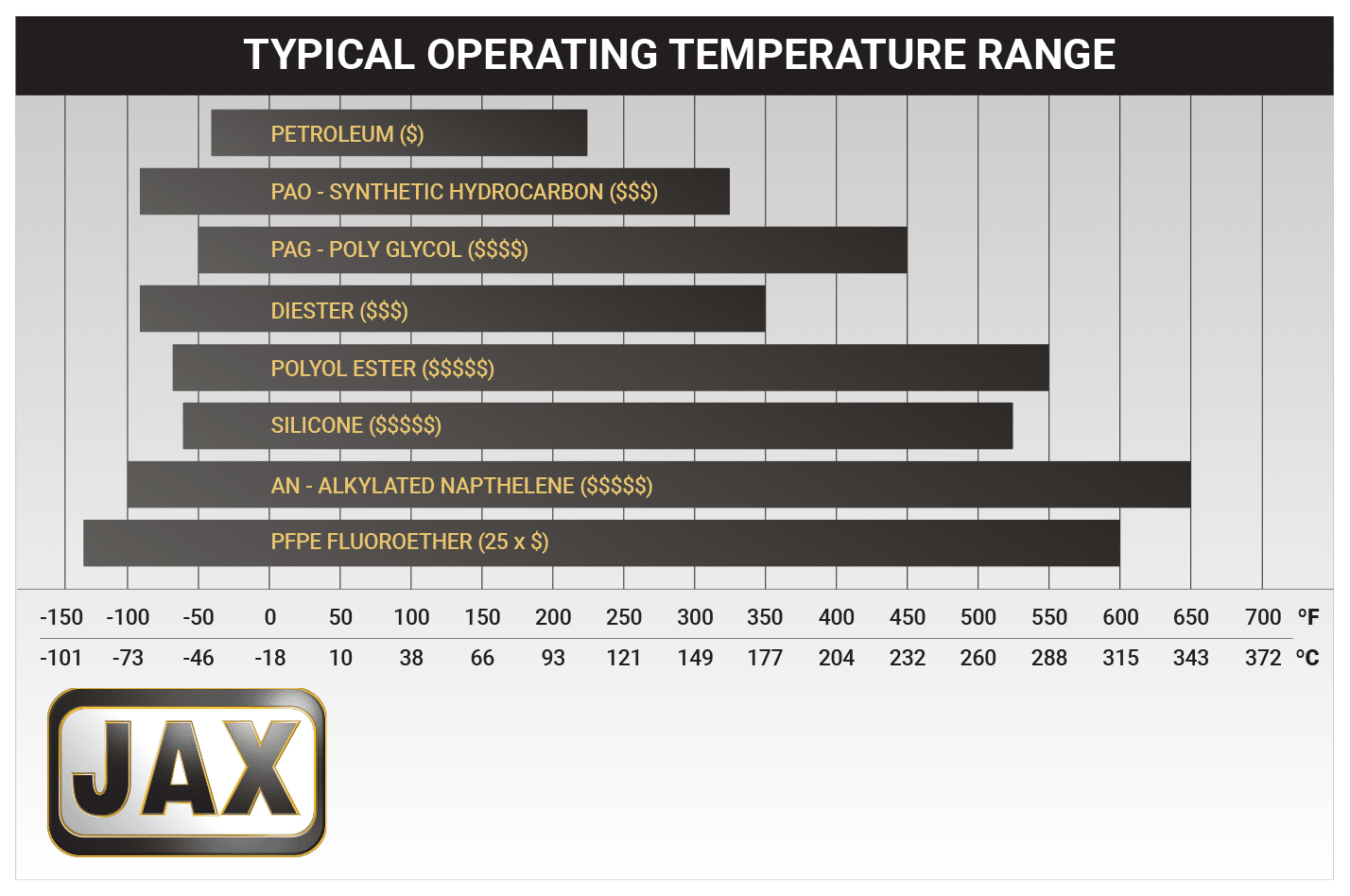
Extremely low temperature chain and conveyor applications
Most low temperature industrial chains and conveyors are found in food processing environments. These applications are typically far below the -40F(-40C) range where conventional mineral based lubricants will function. Freezing methods in food production are continuous processes. Production lines for small pieces like cut fruit and vegetables, or small bits of protein are air driven freezing tunnels having no need for conveyor systems. The fan driven cryogenic air moves the product. As product size and weight increase this is not possible. Straight line conveyors may be used, but the typical freezing method is the cryogenic spiral freezer. In this machinery chain is not driving the rotation, that is performed by a gear box, but chain is supporting the product conveying medium. Here is where PAOs outshine most other synthetic base fluids. PAOs are suitable for H1 food grade applications, and they are also one of the best performing synthetic fluids in terms of flow at extremely low temperatures.
In extreme low temperature applications, a balance must be struck between viscosity and antiwear performance. In the range of -70F(-57C) to -90F(-68C) lubricant flow becomes a critical factor. Freezing equipment OEMs and processors are ever seeking to push the envelope to lower process temperatures. Product freezing, thus production speeds, can be nearly doubled with every 15F(-10C) drop in process temperature. Adding to the lubrication complications, these units will also undergo a CIP (clean in place) sanitization process. This involves chemical cleaning at ambient temperatures or above, so the lubricant must also provide adequate wear and corrosion protection for the equipment before, during and after the CIP process.
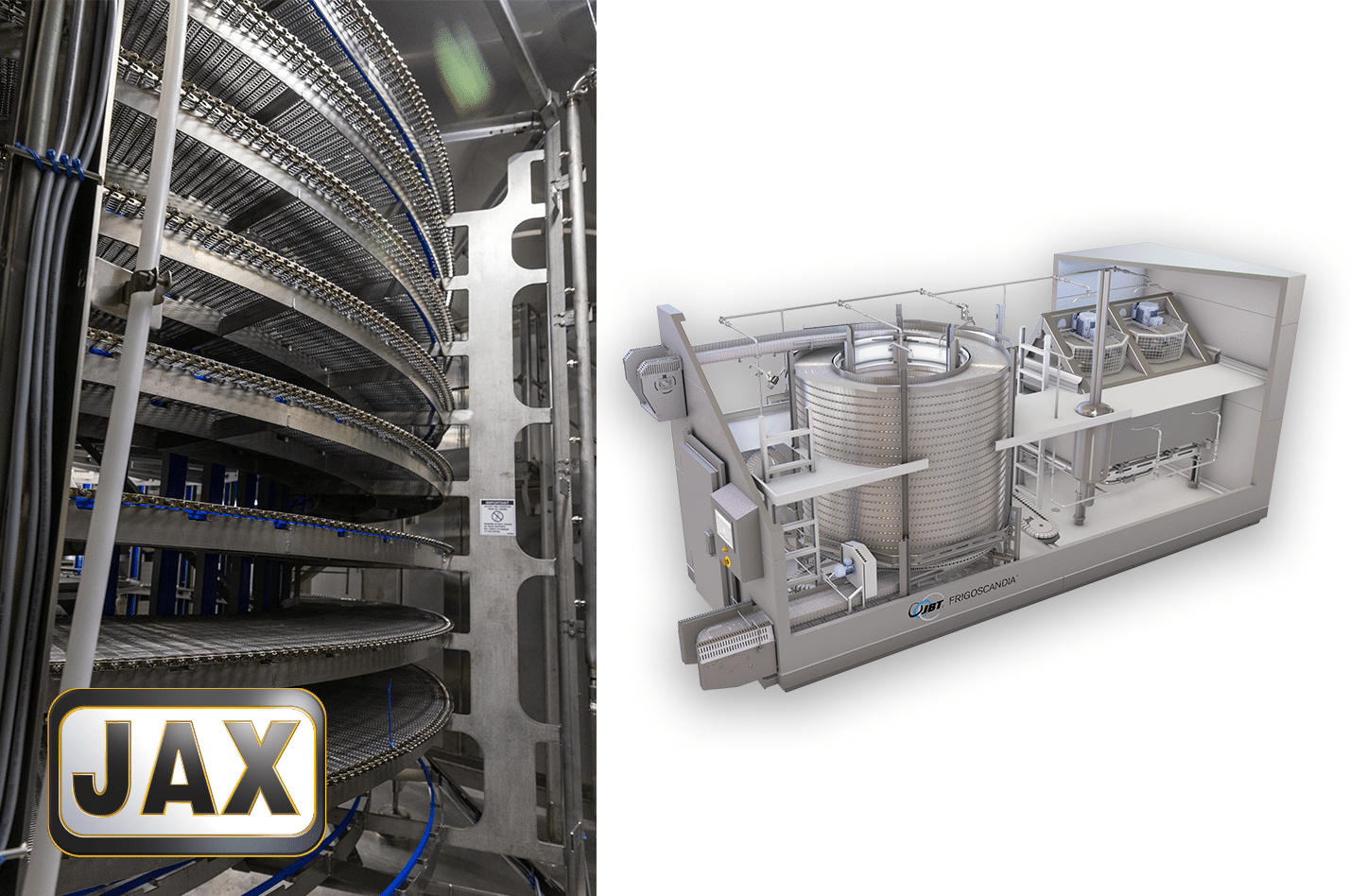
Seven extreme temperature chain and conveyor applications
As we move into even more specialized chains and conveyors the processes may require lubricant formulations specifically engineered to provide compatibility with their particular environments. Several are listed here, but many more exist.
1- E-Coat (Electrostatic paint lines, coating compatibility and lubricity)
This application requires lubricants that satisfy wear protection, however the presence of lubricant in the process may cause paint issues such as fisheyes or poor surface adherence. These coatings are typically water based, so the lubricant must be water and coating soluble and not cause deleterious effects should it migrate to the coating baths or painted surfaces. This application is typically lubricated with custom formulated water soluble PAG base lubricants which will likely have to pass paint compatibility testing with the coating supplier in each production facility.
2- Lithograph ovens (Temperature, contamination)
The primary application is high speed beverage can production where the pin chains conveying the cans through the decorating process will encounter the same temperatures and coating residues as the cans themselves. Typically lubricated with POE based lubricants for high temperature capabilities and better cleanliness factors on the conveying chain.
3- Fiberglass forming and drying chains (Chemicals, extreme temperatures)
Fiberglass insulation production is very aggressive on the conveying chains in the process. In the forming process the weight of the product means that the lubricant will have to provide substantial load carrying benefits in addition to protecting against a potentially very corrosive chemical environment. This can usually be accomplished with a specialty additive formulation in a mineral base oil. When the glass mat proceeds to the drying oven the process is now a very high temperature environment requiring a low volatility, high flash point, clean running POE chemistry. Similar conditions apply to the gypsum and wallboard production processes with slightly less aggressive chemicals and slightly lower oven temps.
4- Fish pack (Salt, water washout)
Saltwater seafood packaging conveyors are subject to an extremely corrosive environment merely due to the salt and sanitization chemicals. Although not extreme in terms of temperature, the typically mineral based lubricants used in these applications must usually be of H1 Food Grade integrity and also ensure an extra high level of wear and corrosion protection under a very severe environment.
5- Proofer ovens (Humidity, abrasives)
Bakery proofer chains see a very high humidity environment for extended periods. Temperatures are not the extreme factor, but the corrosive environment and presence of particulates challenge the lubricant to protect against rust and abrasive wear.

6- Protein rendering plants (Corrosive, high loads)
The equipment used poultry, beef and pork rendering is subject to severely corrosive chemicals as byproducts of the process. Chains employed in these plants must be lubricated with fluids possessing extra measures of protection against environmental and production induced corrosion.
7- Engineered wood presses (Extreme temperatures and contamination)
OSB, particle board and some plywood manufacturing present all of the high temperature issues in an extremely severe environment. The chains and conveyor systems on continuous presses are subject to temperatures approaching 600F(315C) in an oven system which has chemicals and particulates present. Lubricants that perform inadequately can cause issues with excessive carbon residue in conveyor rod cavities and on chain pins and rollers. These issues cannot be completely avoided due to the process, so the lubricant must also have a good degree of self-solubility to help keep the conveying system running smoothly and consistently in order to produce quality, saleable products.
What about dry film lubrication in extreme environments?
In areas so hot that rapid degradation or fire risk makes fluid lubrication impossible, the lubrication of chain systems can sometimes fall to solid lubricants. Typically, the solid lubricant is applied as a suspension or mixture in a sacrificial liquid carrier. The job of the carrier is to enable the solids to flow and penetrate into the wear points and then, as cleanly as possible, dissipate. In this case dissipate really means evaporating or be driven off by the high temperatures in the process. Mineral spirits, alcohols, or PAGs are often favorite carrier fluids due to their relatively clean evaporation or quick flash off characteristics.
Dry film lubricants can exhibit some exceptional friction reduction and high temperature capabilities, however, like fluid lubricants, they will need to be reapplied on a regular interval. One consideration, unlike fluid lubrication, is solids generally do not dissipate. They can accumulate causing lube passageways to clog and chain surfaces to become caked. For example, bakery oven chains lubricated with water or solvent based graphite may require weekly mallet impacting or routine dry ice blasting to remove excess graphite accumulation.
Though solid lubricants can be efficient in reducing friction in many industrial applications their effectiveness can be adversely affected by the levels of humidity, air, water and impurities in the environment. Most dry lubricants are very sensitive to contamination and function optimally in an air free, vacuum environment. Their relative performance can also be directly altered by the particle size and purity of the solid film lubricant itself. In addition, different solid film lubricants will function at varying performance levels depending on their level of affinity for the lubricated substrate material.

What about greased chains?
In submerged conditions chains can be subject to such aggressive washout tendencies that fluid lubrication will simply not be adequate. Under these circumstances chains are customarily engineered to accommodate grease lubrication through grease zerks leading directly to links and pins or to antifriction roller bearings. These chains require a specialty grease to remain lubricated. The grease must be formulated to resist the extreme washout and any corrosion conditions associated with these applications. Considerations such as oil bleed, lubricant recovery and environmental concerns will also guide the proper grease selection.
As one can see the tribology of chain and conveyor lubrication is not as simple as it would appear at first glance. The myriads of machinery, applications, environments and materials both of the chains and the products they convey make for a dizzying array of factors to be considered. Discussions with OEMs, consultation with lubrication engineers and perhaps some relevant field testing may all be necessary to find the best performing solutions. Factors such as extending chain life, conserving energy and enhancing production speeds must all be evaluated and balanced. There may also be more than one solution, but all extreme chain and conveyor conditions will almost certainly demand some type of specialty lubricant and some form of automated application system.
Conclusion
Lubricating chains and conveyors in extreme conditions demands specialized solutions tailored to the specific challenges of high temperatures, chemical exposure, and operational stresses. Specialty lubricants and automated systems are essential for maintaining equipment reliability, minimizing wear, and optimizing production in these harsh environments. Collaboration with OEMs and lubrication experts is crucial to ensure the best performance. As demands grow, so too must lubrication strategies, ensuring critical chains and conveyors continue to support the efficiency and reliability of modern industrial processes.

